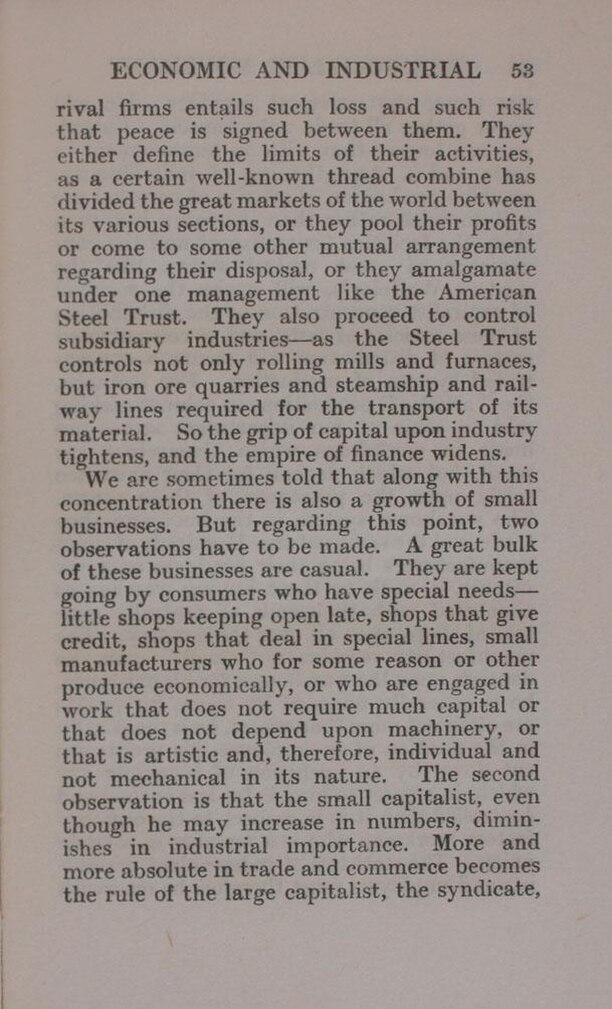rival firms entails such loss and such risk that peace is signed between them. They either define the limits of their activities, as a certain well-known thread combine has divided the great markets of the world between its various sections, or they pool their profits or come to some other mutual arrangement regarding their disposal, or they amalgamate under one management like the American Steel Trust. They also proceed to control subsidiary industries—as the Steel Trust controls not only rolling mills and furnaces, but iron ore quarries and steamship and railway lines required for the transport of its material. So the grip of capital upon industry tightens, and the empire of finance widens.
We are sometimes told that along with this concentration there is also a growth of small businesses. But regarding this point, two observations have to be made. A great bulk of these businesses are casual. They are kept going by consumers who have special needs—little shops keeping open late, shops that give credit, shops that deal in special lines, small manufacturers who for some reason or other produce economically, or who are engaged in work that does not require much capital or that does not depend upon machinery, or that is artistic and, therefore, individual and not mechanical in its nature. The second observation is that the small capitalist, even though he may increase in numbers, diminishes in industrial importance. More and more absolute in trade and commerce becomes the rule of the large capitalist, the syndicate,
